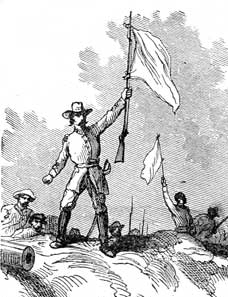
In this latest edition of Military History in 100 Objects, we’re taking a look at three legendary vehicles from wars past and providing details on where you can visit them today. So start your engines and read on.

#13 – The original Memphis Belle – Perhaps the most famous B-17 of all is the Memphis Belle, now part of the National Museum of the USAF at Wright-Patterson Air Force Base in Dayton, Ohio. The storied F-model Flying Fortress, serial number 41-24485, first rolled off the Boeing assembly line in June 1942 and was ferried to the 324th Squadron at Bassingbourn, England three months later. The bomber’s 24-year-old skipper, Capt. Robert Morgan of Asheville, North Carolina christened the plane in honour of his Tennessee girlfriend Margaret Polk. He got the idea for the now-famous moniker after seeing a riverboat named Memphis Belle in the 1942 John Wayne film Lady for a Night. The bomber flew 25 missions over Nazi-occupied Europe in 1942 and 43. After successfully completing one tour of duty, Morgan and his crew, along with their famous four-engine warplane, headed stateside to sell war bonds at series of publicity events held nation-wide. Later, Morgan would command a B-29 in the Pacific. Despite being the subject of a popular 1944 U.S. Army documentary, the Belle was mothballed after the war and consigned to the scrap heap at an Oklahoma airbase. The city of Memphis bought the abandoned aircraft in 1946 for just $350 and put it on display outside a local armoury. There it stayed for more than 40 years. In 1987, the Belle’s much-deteriorated airframe was turned over to a nearby naval base for restoration. The efforts progressed in fits and starts until 2004 when the U.S. Air Force museum acquired the plane. In 2009, a lengthy refit was undertaken. Although the efforts are ongoing, visitors to the museum’s restoration hanger can still catch a glimpse of the Belle as she is slowly brought back to life. Meanwhile, a reproduction of the famous bomber that was used in the 1990 Hollywood feature film about the plane continues to make air show appearances throughout North America. In fact, the aircraft will be flying in Salt Lake City, Utah this coming weekend.

#14 — The Compiègne Carriage — An ordinary-looking antique railway passenger car (No. 2419) is the centrepiece of the Armistice Museum at Compiègne, France. Ninety-six years ago, delegates from Germany, Britain and France met aboard just such a train in a forest about 100 km (60 miles) northeast of the French capital to sign the ceasefire that ended the First World War. The 35-point agreement was ratified aboard French commander Marshall Ferdinand Foch‘s own carriage at 5 a.m. on Nov. 11, 1918. After the conflict, the famous railway car became the official train of the French president. It then went on display at the Cour des Invalides in Paris. It was returned to Compiègne in 1927 to become part of a special commemorative display celebrating the victory over the Central Powers. Ironically, the carriage would later serve as the setting for modern France’s worst humiliation. After crushing the Allies in June of 1940, a spiteful Adolf Hitler summoned his defeated rivals to the historic train car. Once there, Third Reich officials dictate the punitive surrender terms to the French representatives. Following the Axis triumph, the carriage was taken to eastern Germany as a war trophy. It remained there until 1945. In one of his last acts of defiance, the Fuehrer ordered it destroyed with explosives rather than see it liberated and returned to France. The railway car on exhibit at Compiègne is an exact replica of the original.

#15 Der Fuehrer’s Wheels – Speaking of Nazis, the Canadian War Museum in Ottawa is home to an original 1940 bulletproof Mercedes 770K limousine that once belonged to Hitler. The preserved vehicle is far and away the most popular artifact on display at the facility, attracting thousands of guests each year. Amazingly, in 2000 the curators considered selling the piece off for $20 million to help finance a new wing of the museum. The ensuing public uproar forced the directors to reconsider the decision. The notorious car was captured in Austria by U.S. troops in 1945. After the war, a Canadian businessman bought the vehicle from its American owners and donated it sometime around 1970. Hitler supposedly owned six others just like it. One of these was recently discovered in a barn in Germany. A Russian tycoon purchased that model for $15 million in 2009.









